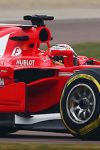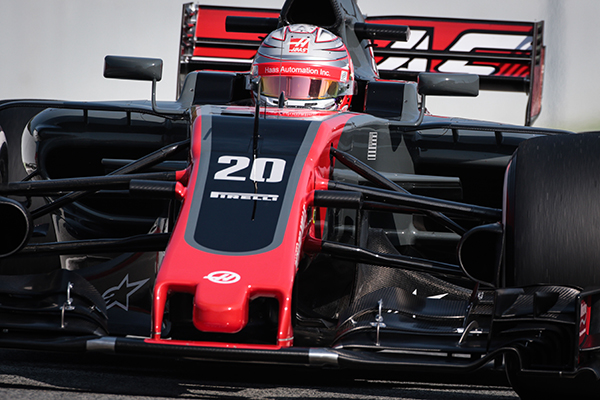
A STRIKING REAR WING INSTALLATION
Rear wing endplates sport a sloped outline on 2017-spec cars, with the endplate bending inward as it goes down.
On the MCL32, it is more than a concave bulge. In bending inwards, the endplate creates an opening (see white arrow) from which profiled winglets are dangling (see yellow arrows).
These help push the dirty air coming off the tyres towards the aperture and the inner side of the wing. The radical design reminds of the prototype rear wing sampled by McLaren at last year’s Austrian Grand Prix.
One possible explanation would be that the winglets channel high-pressure air on the inside of the endplate, namely the lower-pressure area under the rear wing’s main plane.
While this would decrease downforce it would also, most importantly, reduce drag by weakening the vortex generated at the joint area of the endplate and wing tip.
The curvature of the winglets could help level the pressure, which would in turn minimise the loss of downforce while still reducing drag.
Of course, this explanation is only conjectural and only Prodromou and his team know the rationale behind McLaren's complex rear wing assembly.
Further evidence of how sophisticated the airflow circulation is in the area comes from the serrated lower endplate (see the ‘Hilton’ logo). Here, the slits guide the airflow to the outside in order to expand the airflow coming out of the diffuser.
The new McLaren features sophisticated design solutions around profiled and sculplted aero elements. That said, whether the MCL32 can become a grand prix winner in the capable hands of Fernando Alonso and Stoffel Vandoorne is once again likely to depend on engine performance and reliability from its Honda power unit.
GALLERY: F1 drivers' wives and girlfriends
Keep up to date with all the F1 news via Facebook and Twitte





